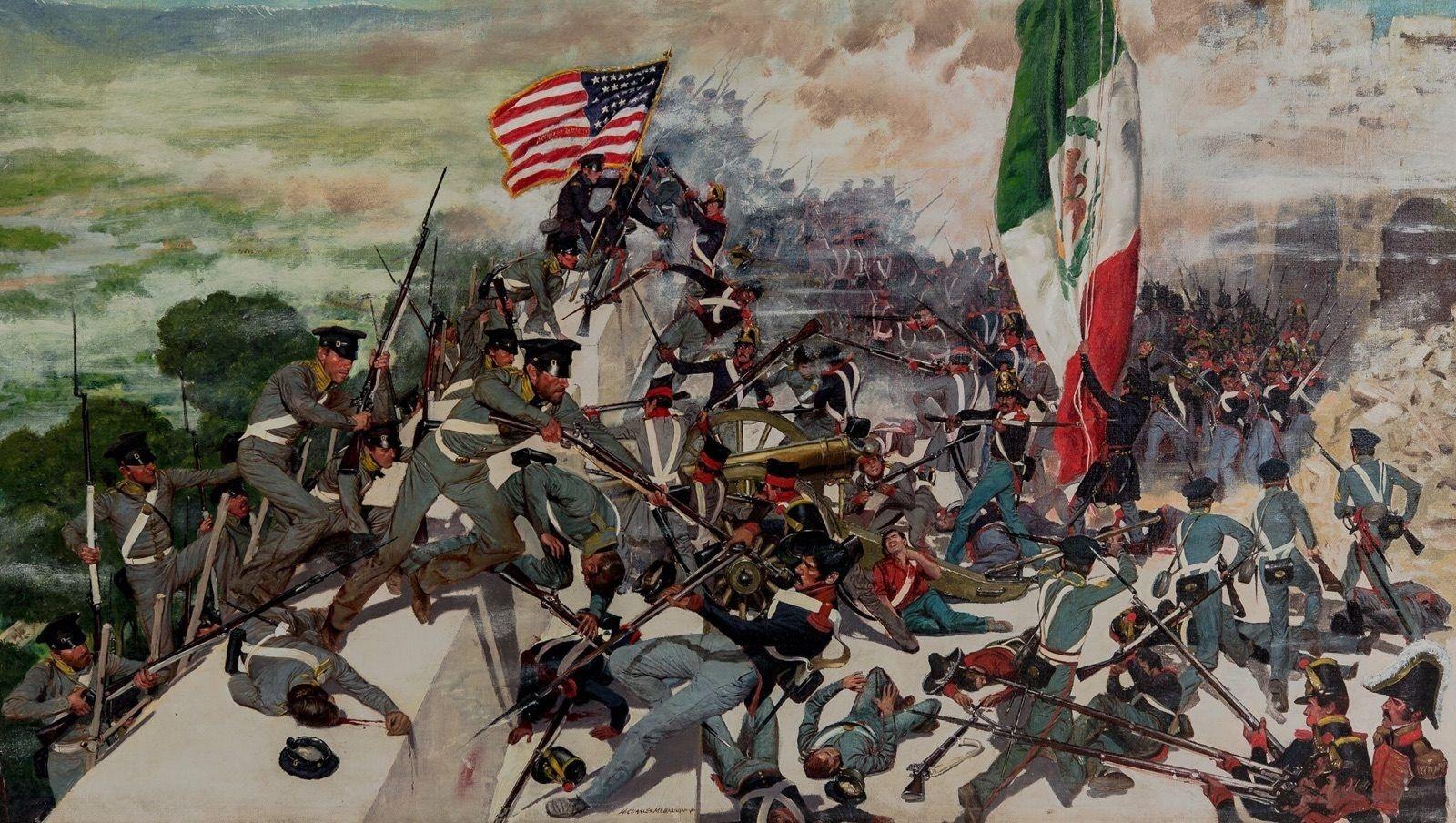The U.S.-Mexico War

The Mexican-American War redrew the map of North America, but it also deepened the nation’s divide over slavery, imperialism, and what it meant to be American.
The Dive
Texas had declared independence from Mexico in 1836, but when the U.S. annexed it in 1845, tensions reignited. Mexico viewed Texas as its territory. The U.S., under expansionist President James K. Polk, wanted more—including California and New Mexico.
Polk offered to buy the land. Mexico said no. So Polk sent troops to a disputed zone between the Nueces and Rio Grande Rivers—land both nations claimed. In April 1846, Mexican and U.S. troops clashed, and Polk called it an invasion on American soil.
On May 13, 1846, Congress declared war. Some saw it as defense. Others, like Frederick Douglass and Congressman Joshua Giddings, saw a war of conquest. The goal: land—and the question of whether slavery would spread across it.
The U.S. military quickly overpowered Mexican forces. Generals Zachary Taylor and Winfield Scott led campaigns that culminated in the capture of Mexico City in 1847. Meanwhile, antiwar sentiment grew, especially among northern abolitionists and working-class laborers.
The Treaty of Guadalupe Hidalgo ended the war in 1848. The U.S. paid $15 million for more than 500,000 square miles of Mexican territory—what’s now California, Arizona, New Mexico, Nevada, Utah, and parts of Colorado and Wyoming.
The war more than doubled the size of the U.S.—and intensified debates over slavery’s expansion. The Wilmot Proviso, proposed during the war, tried (and failed) to ban slavery in the new territories. The divisions it sparked would help ignite the Civil War a decade later.
For Mexico, the war was a national tragedy. For the U.S., it was a geopolitical jackpot—and a moral crisis. Its legacy lives on in the very shape of the border and in the memories of conquest, resistance, and the cost of ambition disguised as destiny.
Why It Matters
The U.S.-Mexico War wasn’t just about territory—it was about power, identity, and ambition. It shaped our map, but it also revealed the fault lines of race, empire, and slavery that still crack our politics today. Understanding this war helps us understand the border—and the border debates—that define the present.
?
Why did some Americans support the war while others opposed it so strongly?
How did the Mexican-American War influence the debate over slavery?
What does the war reveal about Manifest Destiny and American imperialism?
How did the Treaty of Guadalupe Hidalgo shape the modern U.S.-Mexico border?
What parallels can we draw between this war and other territorial or resource-driven conflicts in history?
Dig Deeper
America was ready to expand westward, even if it meant going to war. Learn how and why the Mexican-American War happened.
The Mexican-American War - Explained in 16 minutes
Related

Westward Expansion, Sectionalism, and the Road to Civil War
Manifest Destiny fueled territorial growth, but it also deepened sectional divides—turning political disagreements over slavery and states’ rights into irreconcilable conflicts that led to civil war.

The Louisiana Purchase: A River, A Bargain, and a Bigger United States
In 1803 the United States bought the vast Louisiana Territory from France, doubling the nation’s size, securing the Mississippi River, and setting the stage for westward expansion and hard questions about slavery and Native sovereignty.

Iron, Industry, and Injustice: The Race to Build America's First Transcontinental Railroad
On May 10, 1869, two railroads met in the middle of nowhere—and changed the nation forever. The golden spike didn’t just finish a track. It launched a new era of expansion, innovation, and exploitation.
Further Reading
Stay curious!
